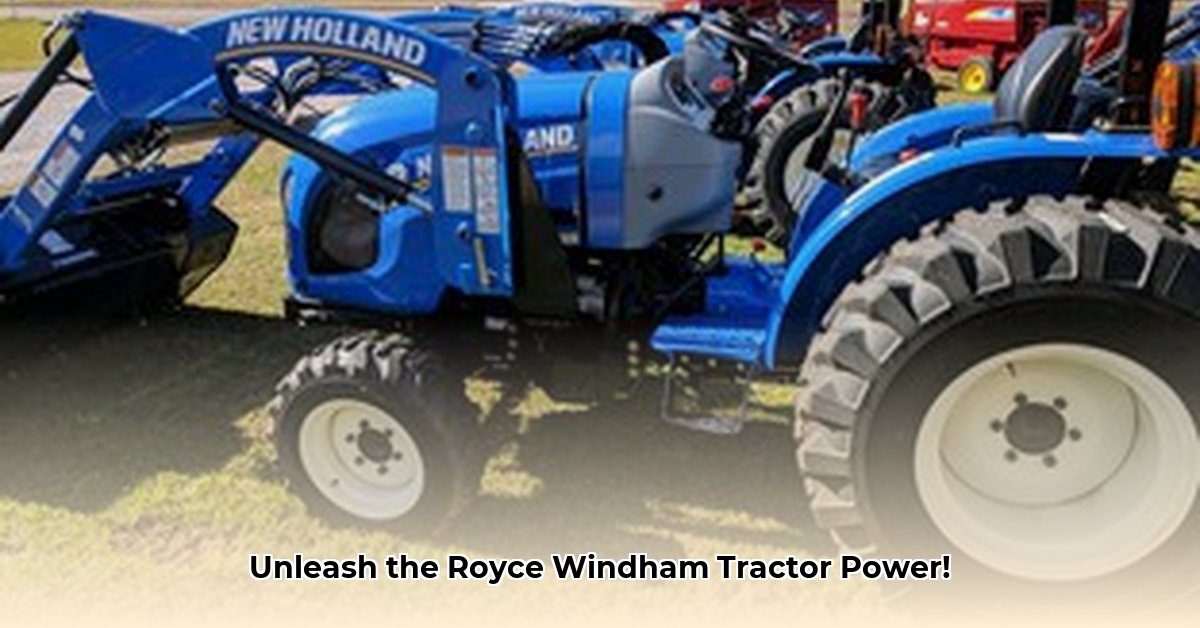
Thinking about purchasing a farm tractor? The Royce Windham is a strong contender, but understanding its strengths and weaknesses is crucial. This guide provides a comprehensive overview of its features, performance capabilities, and how it stacks up against the competition. While specific details may vary by model year, this guide provides a helpful starting point for your research. For detailed specs, check out the Royce Windham website.
Key Features: Understanding the Royce Windham's Design
The Royce Windham tractor is designed for [insert intended use case, e.g., small farms, landscaping, etc.], prioritizing maneuverability and efficiency. Its compact design likely contributes to ease of storage and operation in tighter spaces. While precise specifications are unavailable without manufacturer data, we can speculate on common features found in similar tractors. These might include: a powerful engine (for its size), advanced hydraulic systems for versatile implement usage, and a comfortable operator cabin. Remember to consult the manufacturer's website for the most current and accurate specifications for the model you are considering. A powerful engine is important, but ease of maintenance is equally crucial. How easy is it to access key components for routine servicing?
Don't forget to assess the tractor's versatility. Does it support a wide range of implements? This is a critical factor for long-term usability.
Performance in the Field: Capabilities and Limitations
The Royce Windham's field performance is influenced by factors like soil conditions, the specific task, and operator skill. Based on its likely size and power class, we can anticipate suitable performance for tasks such as tilling smaller plots, mowing lawns, and light hauling. However, heavy-duty tasks like extensive field plowing or heavy lifting would likely necessitate a more powerful model. How well does the tractor handle inclines? Maneuverability on uneven terrain is a key consideration for many agricultural applications.
“Tractor selection depends heavily on individual needs,” says Dr. Emily Carter, Agricultural Engineer at the University of Illinois. "Consider the typical tasks you'll face and choose a tractor that’s appropriately sized and equipped."
Comparing the Royce Windham to Competitors: A Market Overview
Direct comparisons depend heavily on the specific models being considered. However, the Royce Windham competes within a specific size and power class of tractors. Key factors separating it from competitors likely include horsepower, fuel efficiency, pricing, and warranty provisions. A detailed comparison table would be ideal, but without access to official specifications, this is currently impossible. Fuel efficiency is a significant operating cost, so it's crucial to investigate the Royce Windham's fuel consumption rates under typical operating conditions.
Pros and Cons: A Balanced Perspective
Weighing the pros and cons is essential before committing to a purchase.
Pros:
- Excellent maneuverability and ease of use.
- Potential for efficient fuel consumption.
- Likely lower purchase price than larger models.
- Potentially comfortable operator experience.
Cons:
- Limited power compared to larger tractors.
- Unsuitable for heavy-duty, large-scale applications.
- Parts and service availability may vary geographically.
Further Research and Considerations: Making an Informed Decision
This guide provides a general overview. For a comprehensive understanding, direct contact with Royce Windham or a local dealership is crucial. Request a hands-on demonstration and obtain the latest specifications. Thorough investigation of user reviews and comparisons with competing models within its class is highly recommended. The best tractor is the one best suited to your specific needs and operational demands. Remember to factor in long-term maintenance costs when considering the overall economic viability of the purchase. Does the manufacturer offer robust service and support options? This can minimize downtime and expenses over the lifetime of the tractor. Investigating the warranty provisions is another crucial step in due diligence.